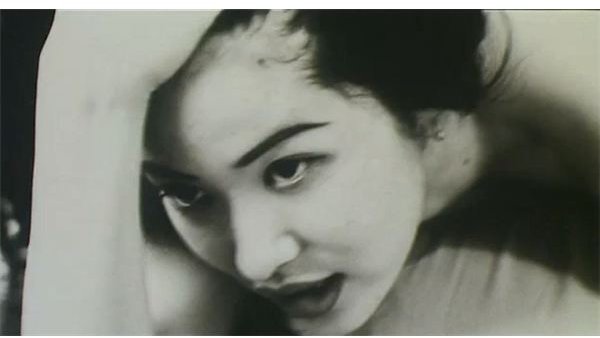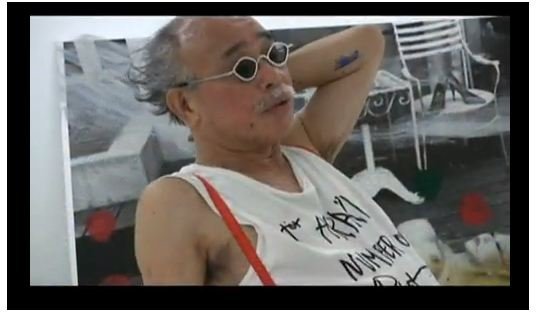Nobuyoshi Araki: Tokyo and Photography
A Short Biography
Nobuyoshi Araki is a Japanese photographer whose controversial work has blurred the boundaries between art and pornography. Araki was born in Tokyo in 1940 and still lives and works in the city today. Araki graduated with a degree in photography and printing from Chiba University near Tokyo in 1963. He immediately started work with the advertising agency Dentsû and won the Taiyõ Prize in 1964. In 1970 Araki produced 25 Xeroxed photo albums in editions of seventy copies. These were sent to art critics, friends and randomly selected people from the telephone directory. Araki wanted to make a statement about art being freed from constraints, exclusivity and the form that art should take. In 1971 Araki published “Sentimental Journey” that documented an intimate account of a wedding trip with his wife, Yoko.
Nobuyoshi Araki’s photography is a type of intimate storytelling through images that he named “I-Photography” comparing it to the confessional style of storytelling in literature that was popular in Japan at the time. By 1974 Araki had established a photography school called “Workshop” with other Japanese photographers such as Moriyama Daidõ, Fukase Masahisa and Yokosuka Noriaki. The school became Araki’s own private photography school with around ten dedicated students by 1976. Araki became most famous for his eroticized images of nudes. Women in Araki’s images are often tied up wearing traditional Kimonos or involved in a sex act. Araki combines his love of Tokyo and his love of women by taking pictures of the city streets; he transcends the ordinary and exposes the extraordinary for public display. Araki has been the subject of obscenity charges and in 1992 a gallery owner was arrested for displaying Araki’s images. Araki’s most famous books include “Tokyo Lucky Hole” that documents Tokyo’s sex industry from 1983 to 1985 and “Tokyo Still Life” that includes images from the Tokyo streets, images of male and female nudes, eroticized imagery of flowers and images of Yoko. Araki won the annual award of the Photographic Society of Japan in 1990 and the Higashikawa International Photo Festival in 1991.
The Streets of Tokyo

Araki’s love of Tokyo can be seen through his images of the city streets and people inhabiting it. Araki’s “Unconscious Tokyo: Tokyo Cube” exhibition chronicled urban life in the city displaying images that ran in two lines all the way around the gallery space. The Unconscious Tokyo images showed the back streets with the prostitutes, the sex clubs and ‘love hotels.’ In “Sentimental Journey” Araki takes snapshot-style pictures of the ordinary streets; there is a mass of parked bicycles, posters, food, the entire city viewed from above, shoes on sale, trees and ordinary people walking, talking and enjoying food. These images are then juxtaposed with imagery of private sex acts, erotic nudes and bound women. Through Nobuyoshi Araki’s photography the viewer can experience every aspect of city life, love, sex, death and decay. Araki’s personal and intimate approach to the image draws in the viewer and asks them to participate and to experience. Araki explores concepts of the face that is shown to the outside and the face that we show in private. His images are transformative in the sense that they allow freedom of expression to the participants in them and they explore Araki’s obsessions and fantasies.
Women and Araki’s Art

Women are essential in the images that Araki produces; to Araki women are life, love, joy and the means to experience pleasure. His images of their beauty as he poses them with toy dinosaurs, elephants, crocodiles or iguanas, Filippo Maggio states; “all point to the artist’s presence and establish a virtual contact.” Araki has said about his photography of women that; “every time I pressed the button, I ended up close to death, because a photograph is to stop time. I want to tell you something, listen closely: photography is murder.” The women themselves ask to have the images taken and submit to being bound, shaved and hung up for the photograph. Even though Araki states that photography is murder, his images are a remembrance of a life; a moment of pure joy that reflects both history (the kimono) and the here and now.
Araki is interested in stories and creates intimate scenarios around the people he photographs. In documenting his wife Yoko’s life and death, Araki exposes himself and his feelings to the world. Intimacy and touch are created through his images; whether his images are of the city, women, erotic or sensual they display sensitivity to their subject that has been rarely equalled.
References
Wilkes Tucker A, Friis-Hansen D, Ryûichi K & Joe T. The History of Japanese Photography, Yale University Press, New Haven and London, 2003
Araki N, Tokyo Lucky Hole, Taschen, London, 1997
Araki N, Tokyo Still Life, Ikon Gallery, 2001
Araki N, Viaggio Sentimentale, Museo Pecci Prato, 2000
The White Cube: Nobuyoshi Araki: Unconscious Tokyo
Nobuyoshi Araki at the Tokyo Met
Image credits:
First screenshot captured from YouTube video, Nobuyoshi Araki
Second screenshot captured from YouTube video, New Love in Tokyo
Third screenshot captured from YouTube video, Nobuyoshi Araki
